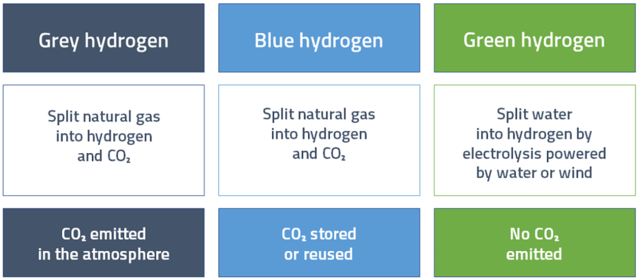Governance
Green Hydrogen For Green Roadmap
- 22 Apr 2021
- 6 min read
This article is based on “A fresh push for green hydrogen” which was published in The Hindu on 15/04/2021. It talks about the significance and steps to augment the production of green hydrogen.
Recently, the Government of India has announced to scale up the target of having 450 GW of renewable energy by 2030. In this context, the Union Budget 2021 has proposed the launch of the National Hydrogen Energy Mission.
Hydrogen is one of the most abundant elements on earth for a cleaner alternative fuel option. Therefore, for a clean future aligning hydrogen production needs to be synchronised with broader electricity demand in the economy.
According to an analysis by the Council on Energy, Environment and Water (CEEW), green hydrogen demand could be up to 1 million tonnes in India across application in sectors such as ammonia, steel, methanol, transport and energy storage. However, several challenges in scaling up to commercial-scale operations persist.
Significance of Green Hydrogen
- Green hydrogen energy is vital for India to meet its Nationally Determined Contribution (INDC) Targets and ensure regional and national energy security, access and availability.
- Green Hydrogen can act as an energy storage option, which would be essential to meet intermittencies (of renewable energy) in the future.
- In terms of mobility, for long distance mobilisations for either urban freight movement within cities and states or for passengers, Green Hydrogen can be used in railways, large ships, buses or trucks, etc.
- Hydrogen has the potential to be the key renewable target in supporting infrastructure as well.
Associated Issues
- Economic Sustainability: One of the biggest challenges faced by the industry for using hydrogen commercially is the economic sustainability of extracting green hydrogen.
- Currently, most renewable energy resources that can produce low-cost electricity are situated far from potential demand centres. If hydrogen were to be shipped, it would significantly erode the economics of it.
- The technology used in production and use of hydrogen like Carbon Capture and Storage (CCS) and hydrogen fuel cell technology are at nascent stage and are expensive which in turn increases the cost of production of hydrogen.
- Legal Hurdle: The Electricity Act, 2003 has envisioned operationalizing open access power across State boundaries. However, this has not been implemented in letter and spirit.
- Without the removal this impediment the electricity tariffs could double when supplying open-access.
Way Forward
- Decentralised Production: Decentralised hydrogen production must be promoted through open access of renewable power to an electrolyser (which splits water to form H2 and O2 using electricity).
- Minimising Intermittency: There is a need for mechanisms to ensure access to round-the-clock renewable power for decentralised hydrogen production.
- To minimise intermittency associated with renewable energy, fuel cells can ensure continuous hydrogen supply.
- Augmenting Production: Improving the reliability of hydrogen supply by augmenting green hydrogen with conventionally produced hydrogen will significantly improve the economics of the fuel.
- In this context, steps like blending green hydrogen in existing processes, especially the industrial sector, can help.
- This will also help build a technical understanding of the processes involved in handling hydrogen on a large scale.
- Providing Finance: Policymakers must facilitate investments in early-stage piloting and the research and development needed to advance the technology for use in India.
- Public funding will have to lead the way, but the private sector, too, has significant gains to be made by securing its energy future.
- Boosting Domestic Manufacturing: India must learn from the experience of the National Solar Mission and focus on domestic manufacturing.
- Establishing an end-to-end electrolyser manufacturing facility would require measures like existing performance-linked incentive programmes.
- There is a need for a manufacturing strategy that can leverage the existing strengths and mitigate threats by integrating with the global value chain.
Conclusion
As the threat of climate change becomes more real and urgent, promotion of Green Hydrogen technologies holds the real promise. Further, this could also be India’s opportunity to lead the world in a cutting-edge, growing space and generate employment in manufacturing, and R&D – in line with India’s Atma Nirbhar Bharat campaign.
|
Drishti Mains Question Hydrogen is one of the most abundant elements on earth for a cleaner alternative fuel option. However, several challenges in scaling up to commercial-scale operations persist. Discuss. |







